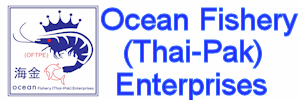About Commercial Fishing in Trinidad & Tobago:
The fishing industry is largely artisanal, but the
fishing fleet also includes multigear longline vessels, as well as a small
number of semi-industrial and industrial shrimp trawlers. They target a variety
of species, including coastal pelagic and demersals as well as the large oceanic
pelagic fish species. There are approximately 1 536 registered vessels in the
fishing fleet. The estimated total fish landings in 1999 was 10 000 metric
tonnes. The industry provides direct employment for an estimated 13 000 persons,
and indirect employment for an additional 50 000 persons.
The artisanal fishers operate open fibreglass vessels ranging in lengths from 6
to 10 metres, and they principally target coastal species such as: wahoo,
kingfish, Spanish mackerel, flyingfish, and sharp-nose, hammerhead, black tip
and small tail sharks. The major fishing gear of the artisanal fishers is the
gillnet, followed by the handline and the trolling line. The semi-industrial and
industrial vessels range in lengths from 14 to 23 metres. They are equipped with
surface longlines from which 300 to 1 000 hooks target the oceanic pelagic
species such as: yellowfin tuna, bigeye tuna, swordfish, and dolphinfish, with
sharks, Spanish mackerel, and blackfin tuna being considered as bycatch.
Data from the fishing industry is collected randomly through a combination of
enumeration and sample surveys at selected artisanal landing sites; data for the
offshore fleet (industrial and semi-industrial) is collected from their export
and domestic sales records. Total landings are estimated using the results of
frequent censuses of active fishing vessels at both the enumerated and
nonenumerated landing sites.
Trinidad and Tobago established a Monitoring and Advisory Committee on Fisheries
to promote self-regulation and consensus with respect to management measures.
This mechanism has established strategies such as season and area restriction on
demersal shrimp, and mesh size increase for gillnets. Although there are no
specific local regulations on fishing for the large pelagic fish resources, the
government has ratified the ICCAT convention and plans to adopt it into local
legislation.
Fishery and Aquaculture Country Profile for West Indies, Trinidad &
Tobago
- aquatic species caught by country or area, by species items, by
FAO major fishing areas, and year, for all commercial, industrial,
recreational and subsistence purposes. The harvest from mariculture,
aquaculture and other kinds of fish farming is also included.
|
AQUASTAT is FAO's global information
system on water and agriculture developed by the Land and Water
Division. It collects, analyses and disseminates data and
information by country and by region. Its aim is to provide users
interested in global, regional and national analyses with
comprehensive information related to water resources and
agricultural water management across the world, with emphasis on
countries in Africa, Asia, Latin America and the Caribbean.
Information for Trinidad & Tobago - West Indies
Ocean Health Index Trinidad & Tobago - The Ocean Health Index is a valuable tool for the
ongoing assessment of ocean health. By providing a means to advance
comprehensive ocean policy and compare future progress, the Index
can inform decisions about how to use or protect marine ecosystems.
The Index is a collaborative effort, made possible through
contributions from more than 65 scientists/ocean experts and
partnerships between organizations including the National Center for
Ecological Analysis and Synthesis, Sea Around Us, Conservation
International, National Geographic, and the New England Aquarium.
Information for Trinidad & Tobago
|




